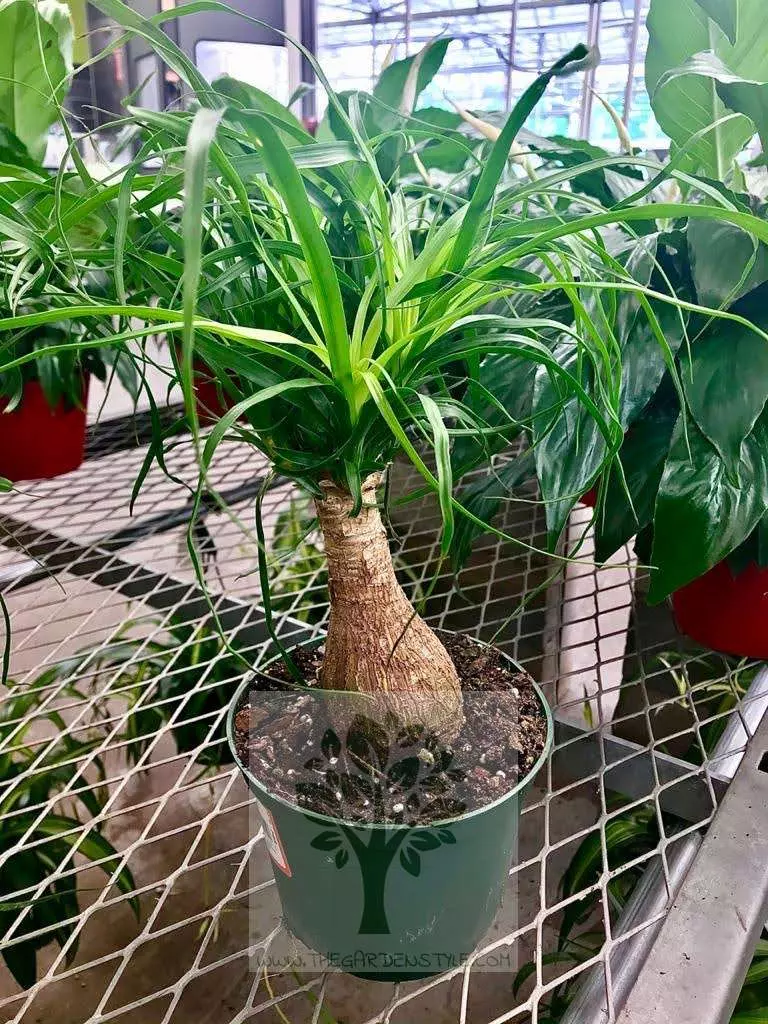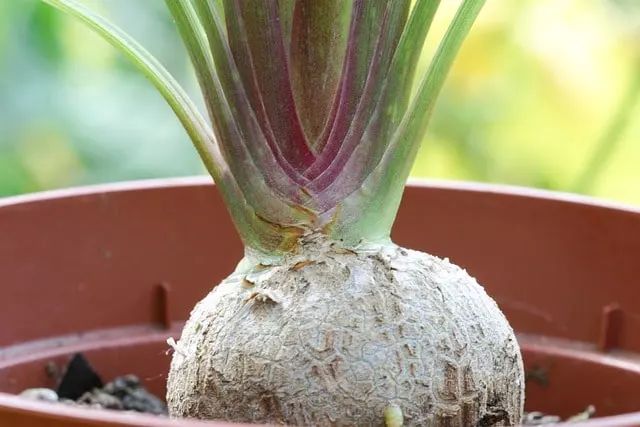Despite the ponytail palm or elephant’s foot (Beaucarnea recurvata) needing a low frequency of watering, sometimes the ponytail palm has dry brown tips. If this is your case, then follow these steps that I will explain on how to revive ponytail palm plant, and you will see that it will soon recover. Continue reading to find out all about ponytail palm brown tips.
Ponytail palm is not a palm tree as its name suggests, this plant is native to the desert areas of Mexico. The plant thrives in a specific environment known as a low deciduous forest, characterized by an average temperature of 68 °F (20 °C) and an annual rainfall of 31″ (800 mm). This forest type experiences a distinct dry season lasting around 7 to 8 months. These forests are typically found at altitudes ranging from 0 to 5577 ft (0 to 1700 meters) above sea level.
Table of Contents
How to Revive Ponytail Palm Due to Lack of Watering
If your ponytail palm tree has brown tips due to a lack of watering, you should follow these steps to revive your ponytail palm tree:
Cut off those branches that have become dry, as well as the tips of the leaves that you see dry.
Move the ponytail palm to a location with less direct sun.
Water the ponytail palm abundantly and let it drain as much as possible through the holes in the pot for half an hour. If when checking it after this time you see that the soil is separated or cracked (even though it is wet), the substrate is no longer useful.
On the other hand, if the substrate is well-moist and compact, it will not be necessary to change it. Continue to control the moisture of the substrate in the following days.
Check the location. If the location has less sun the plant will be healthier. Although it is a plant that does not require much water, in case it dries out, water it abundantly and let it drain completely.
If you see that you have to change the soil, you will have to repot it and if possible, put the ponytail palm in a bigger pot. Be careful not to damage the roots when transplanting.
Make sure the new pot or container has sufficient drainage holes.
Choose a high-quality substrate. Suitable for succulents. A commercial mix of succulents and cacti is a great choice.
When you have the ponytail palm planted and settled in the center of the pot, water it and place a plate underneath so that the excess water drains well. After a few minutes remove the excess water and check if the soil has been well compacted and moist or not.
Remember to place it in a semi-shaded location to prevent it from drying out and burning the tips.
- FOR USE ON: Use as a potting soil mix for all succulents, cactus, palm, and citrus including Jade Plants, Burro’s Tails, Aloe Vera, Barrel & Christmas Cactus.
- CONTAINS: This organic soil for Cactus & Succulents is a rich blend of sphagnum peat moss, humus & perlite; It will help provide optimum aeration and drainage.
- MYCO-TONE: A proprietary blend of endo & ecto mycorrhizae.
Ponytail Palm Leaves Turning Brown Due to Excess of Watering
The ponytail palm plant does not need too much water. So, the most common problem with the ponytail palm is when it rots due to overwatering. This plant needs only some water every two weeks and during winter only once monthly. If the plant is exposed to the rain any inconveniences with drainage (no holes in the pot or bad substrate) will compromise its health. The excess water rots its roots. If you see that your ponytail palm plant looks drowned, dark with limp leaves, or soft, follow these tips to recover a drowned ponytail palm plant.
Placing the ponytail palm directly in the sun may not be effective. You should relocate it to a semi-shaded site or indoors near a window.
Carefully remove the ponytail palm from the pot and remove as much wet soil from the roots as possible.
Prune any roots you see that are blackened or dark brown and leave any lighter ones untouched. Removing rotten roots is essential to save a ponytail palm tree with brown tips.
Repot the ponytail palm using new soil. Choose a commercial soil for succulents and cacti. By replacing the soil, you remove excess moisture and provide a new substrate that is not waterlogged. Also, you are providing new nutrients to the plant.
After a few days of repotting, the ponytail palm should look better. Then, place the ponytail palm in a warmer place, with a little more sunlight. In addition, as soon as you notice that the substrate is completely dry, you can start watering it normally, in small quantities, making sure that the drainage works well and removing the excess water from the saucer.
I recommend you read our article about ponytail palm care so that your ponytail palm grows properly.

Ponytail Palm Brown Tips Due to Nutrient Deficiencies
In some cases, brown tips on ponytail palms can be a sign of nutrient deficiencies, especially in the presence of other symptoms such as yellowing leaves or stunted growth. Consider using a balanced fertilizer formulated specifically for ponytail palms and follow the application instructions.
You should not use palm fertilizers because remember that the ponytail palm is not a palm tree, it is only called that way. It is best to use a cactus or succulent fertilizer which is the most suitable for fertilizing the ponytail palm. An NPK 1-2-2 or similar fertilizer will be more than enough for a ponytail palm.
- ORGANIC PLANT FOOD: This liquid fertilizer for Cactus, Succulents and tropical plants provides organic nutrients to ensure superior results and is safe to use around kids and pets.
- EASY: Simply add ½ cap of Cactus! plant food liquid per quart of water and water your plants. Thoroughly drench the soil of the plant. For best results use every 2-4 weeks.
- CONTAINS: Essential plant nutrients to help plants thrive. Liquid plant food is a vital part of indoor plant care, for plants both large & small. See label for all ingredients.

Final Conclusions
In conclusion, brown tips on ponytail palm can be caused by a variety of factors. The most common reasons include under watering, overwatering, and nutrient deficiencies. To address the issue, it is important to assess the watering routine, ensuring the soil is adequately moist but not waterlogged. Maintaining moderate humidity levels through misting or using a humidifier can also help.
Providing balanced nutrients and avoiding extreme temperature fluctuations or direct sunlight exposure is essential for the plant’s health. If the problem persists or worsens, do not hesitate to contact us through the contact form so that we can help you with your ponytail palm.


